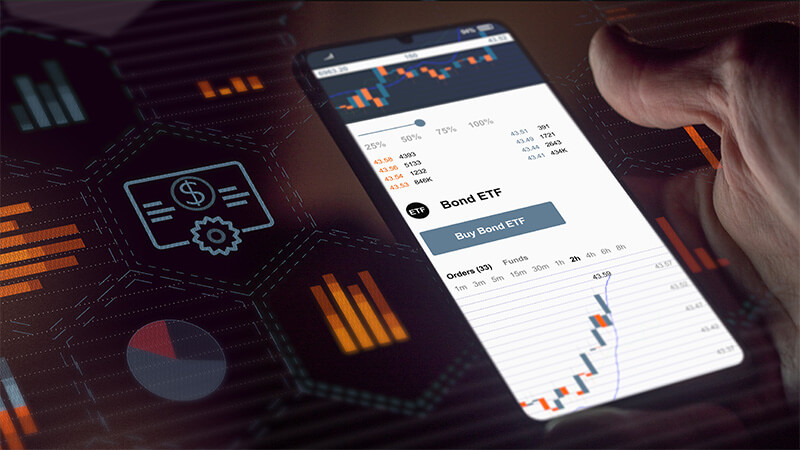This website uses cookies. By continuing to browse the site, you are agreeing to our use of cookies
Blockchain 101 – The Next Big Shift in Technology
Financial Services
May 18, 2017
Blockchain, once an obscure technology, now is all in rage. It is a promising field and has been continuously creating a positive hype. Blockchain is the predecessor of Bitcoin, but has gained prominence after. In this first part, of the four part series of blockchain, we will try to break the concept of Blockchain down, ‘block by block’, starting from what this technology means, at the very basic level and why is it important for businesses, researchers, governments, entrepreneurs and technologists. We will also delve into the need to know blockchain thoroughly.
Famous business thinker & digital strategist *Don Tapscott says “technology that would be impacting our lives greatly, in coming decades has arrived – ‘The Blockchain'”. He refers to it as the – second coming of the internet. It is also the underlying technology for the famous digital currency Bitcoin. Bitcoin is only one of the many existing and potential applications built out of Blockchain technology. If Bitcoin is Facebook, then Blockchain is the entire gamut of internet, and there is tremendous scope for utility and killer app like Google to come along the way on this platform.
Don explains in his lucid *TED talk that Blockchain as a technology will help the internet to expand from being ‘Internet of Information’ today, to ‘Internet of value’ in the future.
Internet of Information and Blockchain Convergence
‘Internet of Information’ means using the internet to share a copy of an original information. Any information shared over the web, loses its exclusive property. Even breaking news is valuable only for a fraction of time, after it has been released. Subsequently, it will have been copied many times over with convenience.
This ease of sharing information also happens to be the most democratizing feature of the internet, sometimes virtually at the cost of electricity and internet consumption. Thus, people everywhere in the world can access the same search engines (Google, Wikipedia) to educate themselves, or meet friends at social networks and broadcast content uniformly. Even a piece of blog (long-form content) published at this very moment, is of lesser value as time passes. This is because it can be copied or accessed by anyone, anywhere in the world. The only option to monetize it, is through using ads and billing the mind-share that people spend on it. Every Google or Facebook login, accessed on an app, is completed through a copy of profile information available with search engine companies. Every ride a customer books using the cab-hailing services, is through a copy of Mapbox/Google maps of their location. If Uber didn’t leverage copies of same map, there would be no ride-hailing industry today.
We can safely conclude that ‘Internet of Information’ has proven to be a valuable gift to mankind and we cannot imagine a world without it. Much more could be done with this.
Ctrl+C/V = Internet of Information, Ctrl+X/V = Internet of Value
With the help of internet, information can seamlessly flow through web and be shared with most people. Information can be in any form and not necessarily be free all the time. Let’s take an example of using a premium account like LinkedIn Sales Navigation, wherein, we pay LinkedIn for using add-on features. The information that we access here remains a copy available to multiple other users.
However, when it comes to sharing an asset over the web – which should be shared as an original copy – to retain its exclusivity and inherent value; the internet has its limitations. By asset, it means that which can permanently change hands; like money, as well as retain its value. Instead, if a copy of an asset is being shared, it loses its unique value. For example, if we could transfer a copy of an asset, say $100 in a digital wallet. We can retain a copy for ourselves. The asset will be eligible to be spent only once. Which means it becomes useless once it is used as the $100 cannot recreate or duplicate itself. This problem is referred to as ‘DoubleSpend‘ by cryptographers; a phenomenon that doesn’t allow people or groups to share an asset of value, over the internet thus, limiting internet’s application to only copyable information.
When exchanging hands for an asset of value, like money, stocks, loyalty points, intellectual property, votes, carbon credits etc., one needs to reply on third parties or intermediaries.
These intermediaries include banks, governments, internet companies, credit card companies, and middlemen and so on. These intermediaries set-up the contractual environment and perform transaction activities, like authentication, identification of parties, clearing & settling of payments/assets, record-keeping etc. We depend on these intermediaries because of ‘trust’, which is quite critical here as we rely on them to hand over our assets to various parties through them.
However, there are many downsides to transferring assets and enforcing contract through these intermediaries.
Let’s take a look at some of these:
-
- Security: Intermediaries are centralized organizations and are lucrative hacking targets. Successful hacks in the past have resulted in loss or tampering of assets/private data.
- Inaccessibility: Intermediaries, by nature, are designed and set up closer to the business’ highest paying customer. This gerrymandering excludes a lot of marginalized sections who need the services just as much. For e.g. unbanked individuals in rural areas needing credit or banking services.
- Slow: Transactions take additional time due to bureaucracy (middlemen) and multiple manual steps.
- Expensive: A chunk of money is paid to intermediaries. These can range up to 10-20% in case of private services like wiring money to another country along with high tax rates are levied by the government.
- Privacy: Some intermediaries profile and monetize personal information, at the cost of privacy of the customer. For example credit card records are shared with advertisers.
We do live in an inefficient, and sometimes unfair world. But, can we do better? Is there a way to escape the intermediaries and the downsides that come along? Is there a way to expand the ‘Internet of Information’ to ‘Internet of Value’, where assets can securely change hands without depending on inefficient intermediaries to establish trust?
Sources
- TED Talk by Don Tapscott: How the blockchain is changing money and business
- BCG blog: A Strategic Perspective on Blockchain and Digital Tokens
- BCG blog: Seven Possible Killer Apps for Blockchain And Digital Tokens
- BCG blog: HOW BITCOIN WORKS
- Investopedia term definition: 51% Attack
- Bitcoincharts
- Wiki: Blockchain
Related Blogs

Generative AI in Financial Services: Transforming Goal-based Financial Planning
- Financial Services
- Generative AI

Six Frameworks for Financial Services Modernization
- Financial Services
- Generative AI

KYC Process in Wealth Management: Digitalization Benefits
- Financial Services

Composable Enterprise Model: Unlocking New Growth Opportunities in Financial Services
- Financial Services

Generative AI in Financial Services: Reshaping Business Value and Customer Journeys
- Financial Services
- Generative AI

Revolutionizing Wealth Management: The Gen AI Advantage
- Financial Services
- Generative AI

Gen AI: A Game Changer in Bond Investment through Risk Assessment
- Financial Services
- Generative AI

Transforming Asset Management: The Power of Gen AI
- Financial Services
- Generative AI

Empowering Financial Institutions in the Digital Era: How Generative AI is Reshaping Business Value and Customer Journeys
- Financial Services
- Generative AI

Ready to Pursue Opportunity?
Every outcome starts with a conversation








